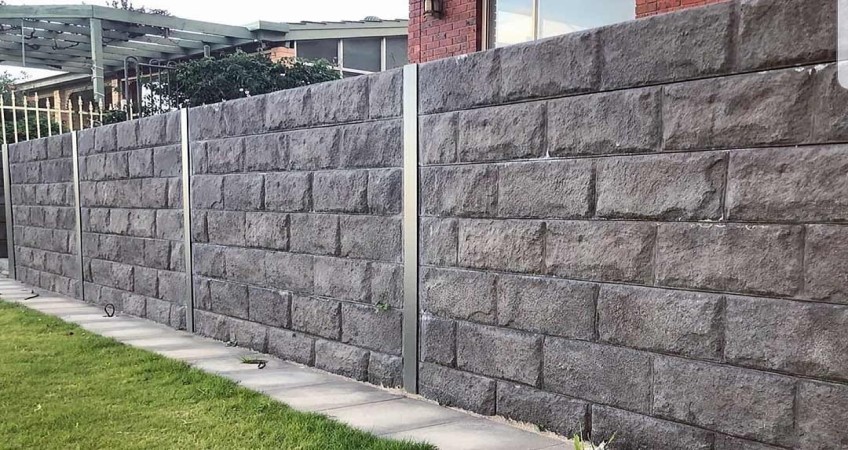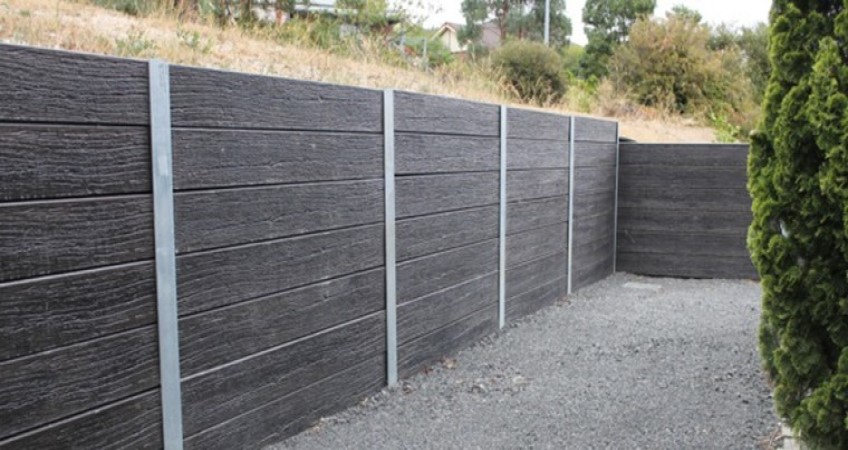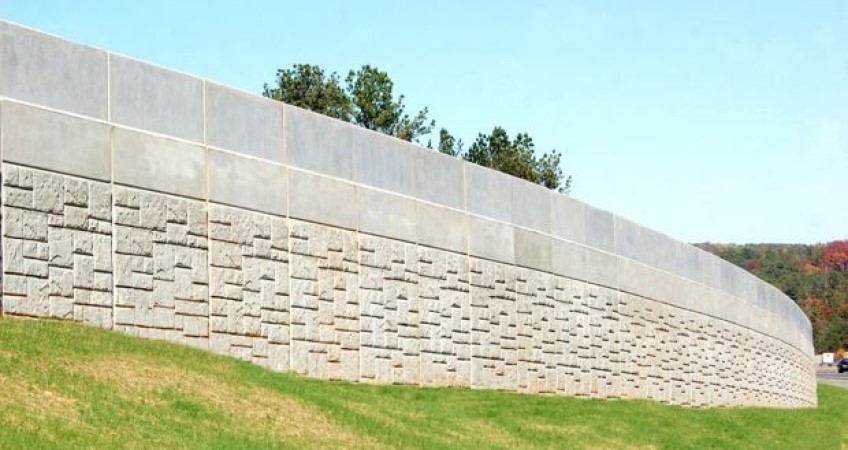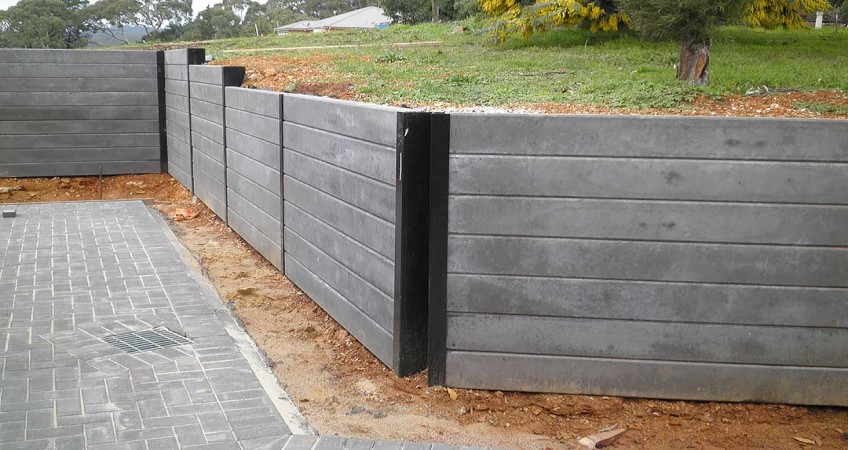In the bustling metropolis of Melbourne, where urban development is thriving, the need for innovative and structurally sound solutions in commercial spaces is paramount. Among these, retaining walls are formidable sentinels, seamlessly blending form and function. These feats of engineering shape the contours of environments and play a vital role in upholding stability, averting erosion, and optimising usable area. In this vibrant cityscape, retaining walls have become an integral feature in the architectural repertoire of commercial spaces. This introduction delves into the significance of retaining walls in Melbourne’s commercial landscape, exploring their multifaceted contributions to the urban fabric and their indispensable role in shaping the city’s dynamic and evolving environment.
Here Are Some Key Reasons Why Retaining Walls Are Essential in Commercial Spaces:
- Erosion Control: Melbourne experiences a range of weather conditions, including heavy rainfall. Retaining walls helps prevent soil erosion, especially on sloped terrains. This is crucial for maintaining the stability of the landscape and avoiding damage to surrounding structures.
- Maximising Space Utilisation: Melbourne is known for its limited space, especially in urban areas. Retaining walls allow for the creation of level terraces on sloped land. This maximises usable space, particularly valuable in commercial settings where every square metre counts.
- Structural Support and Stability: Retaining walls provide structural support to the soil behind them. They prevent the collapse or movement of soil, which could otherwise lead to damage to nearby buildings, roadways, or other infrastructure.
- Aesthetic Enhancement: Retaining walls that are skillfully designed and built can greatly elevate the visual allure of a commercial property. Various materials like stone, concrete, timber, or even greenery can be employed in their construction, harmonising with the architectural style of the surrounding area.
- Safety and Security: In areas with significant elevation changes, retaining walls act as barriers to prevent accidental falls or landslides. This is particularly important in commercial spaces where foot traffic or machinery may operate near the edge of a slope.
- Regulation Compliance: In many urban areas, including Melbourne, there are local building codes and regulations regarding the construction of retaining walls. Ensuring that a retaining wall is well-constructed and complies with these regulations is essential to avoid legal issues and potential fines.
- Property Value Enhancement: A well-designed and properly constructed retaining wall can increase the market value of a commercial property. It adds functionality and contributes to the overall appeal of the space.
- Water Management: like many parts of Australia, Melbourne experiences periodic droughts and water restrictions. Retaining walls can be designed with features like drainage systems and water collection mechanisms, aiding in efficient water management and conservation.
- Noise Reduction: Depending on the location and design, retaining walls can also serve as sound barriers, helping to reduce noise pollution from nearby roads or other sources.
- Longevity and Durability: When constructed using quality materials and by skilled professionals, retaining walls can last for many years with minimal maintenance. This ensures that the benefits they provide continue over the long term.
Specific Considerations For Melbourne’s Climate And Landscape

In Melbourne, the climate and landscape present unique considerations when choosing materials for a commercial retaining wall:
- Variable Weather Conditions: Melbourne experiences a temperate oceanic climate with unpredictable weather patterns. This includes hot, dry summers and cool, wet winters. The chosen material should be able to withstand temperature fluctuations, as well as potential exposure to rain, humidity, and occasional heatwaves.
- Rainfall and Drainage: Melbourne is known for its variable rainfall patterns, with occasional heavy downpours. The retaining wall material should facilitate adequate drainage to prevent water buildup and erosion behind the wall. This may involve incorporating drainage systems or using absorbent materials.
- Soil Composition: Understanding the type and composition of the soil is crucial. Melbourne’s landscape includes various soil types, from clayey to sandy. The material chosen for the retaining wall should be compatible with the specific soil conditions to ensure stability and proper anchoring.
- Compliance with Local Regulations: Melbourne has specific building codes and construction regulations, including retaining walls. It’s essential to ensure that the chosen material meets or exceeds these standards to comply with local laws and ensure the safety and integrity of the project.
- Bushfire Risk: Depending on the location of the commercial space, there may be a risk of bushfires, especially in outer suburban or rural areas around Melbourne. Materials should be chosen considering fire resistance and compliance with relevant fire safety regulations if applicable.
- Availability of Local Materials: Opting for locally sourced materials can have environmental benefits and potentially lower transportation costs. Additionally, local materials are more likely to be readily available, reducing lead times for construction.
- Aesthetics and Architectural Harmony: Considering Melbourne’s diverse architectural styles and landscaping preferences, the chosen material should harmonise with the surrounding environment. It should enhance the overall aesthetic appeal of the commercial space.
- Maintenance and Longevity: The material should be selected with an understanding of its maintenance requirements. Melbourne’s climate may affect the longevity and condition of certain materials, so choosing one that will stand the test of time with appropriate care is essential.
By taking these specific considerations into account, you can ensure that the chosen material for the commercial retaining wall in Melbourne is well-suited to the local climate and landscape, promoting both functionality and durability.
Common Materials for Commercial Retaining Walls
In Melbourne, as in many other places, retaining walls are commonly built using various materials. The selection of material is contingent on variables like wall height, soil conditions, aesthetic preferences, and the project’s financial considerations. Here are some common materials used for commercial retaining walls in Melbourne:
- Concrete: Concrete is famous for retaining walls due to its strength and durability. It can be poured on-site or precast and then installed. Concrete walls can be plain, stamped, or stained for aesthetic purposes.
- Timber: Timber retaining walls are cost-effective, especially for shorter walls. They have a natural look that can blend well with gardens and landscapes. However, timber may require more maintenance over time.
- Stone and Masonry: Natural stone or manufactured stone blocks are often used for retaining walls. They provide a classic and timeless look. Common types include sandstone, bluestone, and granite.
- Brick: Bricks can create durable and visually appealing retaining walls. They come in various colours and can be laid in different patterns to achieve the desired aesthetic.
- Gabion Baskets: Gabion walls are built by filling wire mesh baskets with rocks or other appropriate materials. They are a flexible and environmentally friendly option that can provide a unique texture to the wall.
- Poured-in-Place Concrete: This involves pouring concrete directly into moulds on-site. It allows for more customisation in terms of shape and design.
- Segmental Retaining Wall Blocks (SRWs): These are pre-engineered concrete blocks designed for retaining wall construction. They are easy to install and come in various sizes, styles, and colours.
- Steel or Vinyl Sheet Piling: These materials are typically used for seawalls and retaining walls where erosion or water pressure is a concern. They offer excellent resistance to water-related forces.
- Composite Materials: Some newer materials, like composite timbers or recycled plastic products, offer an eco-friendly and durable alternative.
- Rammed Earth: While rare in commercial settings, rammed earth walls are eco-friendly and use natural, locally sourced materials.
When choosing a material, it’s essential to consider factors like soil type, drainage, and engineering requirements. Additionally, complying with local building codes and regulations is crucial. Consulting with a professional engineer or contractor with experience in retaining wall construction is highly recommended to ensure the chosen material is appropriate for the specific project.
Factors to Consider When Choosing Materials
Durability and Longevity
When it comes to durability and longevity, the choice of materials for a commercial retaining wall is of paramount importance. Here’s how different materials align with these crucial factors:
Concrete:
- Durability: Concrete is renowned for its exceptional strength and durability. It can withstand the pressures exerted by soil and environmental factors over long periods. This resilience ensures the retaining wall remains structurally sound, even under challenging conditions.
- Longevity: Well-constructed concrete retaining walls have a long lifespan, often lasting several decades without significant deterioration. Proper maintenance can extend their longevity, making them a reliable choice for commercial projects.
Stone or Masonry:
- Durability: Natural stone or masonry materials are inherently robust. They can withstand natural elements, including weathering, without compromising their structural integrity. This durability is crucial for retaining walls, especially in environments with high exposure to the elements.
- Longevity: When installed correctly, stone or masonry retaining walls can last for generations. Their resistance to wear and tear ensures they maintain their functionality and appearance over the long term.
Steel and Gabion:
- Durability: Renowned for its robustness and resistance to corrosion, steel is a lasting option for retaining walls. Gabion walls, constructed from wire mesh containers filled with stone, also offer robustness against environmental stressors.
- Longevity: When properly coated or treated, steel retaining walls can resist corrosion for extended periods. Gabion walls, filled with natural stones, are durable and highly resistant to wear, contributing to their long lifespan.
Timber:
- Durability: Timber retaining walls can exhibit good durability, especially those made from pressure-treated or naturally rot-resistant wood species. They can withstand the elements and soil pressure, especially when adequately maintained.
- Longevity: Properly treating and maintaining timber retaining walls can last several decades. Regular inspections and re-treatment as needed can significantly extend their functional lifespan.
Aesthetics and Design
Aesthetics and design are crucial in selecting materials for a commercial retaining wall. Here’s how different materials align with these factors:
Concrete:
- Aesthetics: Concrete offers a clean, modern, and versatile appearance. It can be moulded and finished in various ways to achieve different textures, patterns, and colours. Decorative treatments like staining or imprinting can enhance its visual appeal.
- Design Flexibility: Concrete allows for straight and curved designs, making it adaptable to various architectural styles and landscaping preferences.
Stone or Masonry:
- Aesthetics: Natural stone or masonry materials provide a timeless and rustic aesthetic. Their varied colours, textures, and sizes create a visually pleasing, organic look. They can blend seamlessly with natural surroundings or complement architectural elements.
- Design Flexibility: Stone allows for artistic expression through arrangements like random patterns or carefully organised layouts, adding depth and character to the retaining wall.
Timber:
- Aesthetics: Timber imparts a warm, inviting feel and a natural, earthy aesthetic. It complements outdoor environments beautifully and can create a harmonious, rustic look. Different wood species offer various grain patterns and colours, allowing for customisation.
- Design Flexibility: Timber can be cut and shaped to achieve specific design elements, making it adaptable to various styles. It’s especially well-suited for projects emphasising a natural, eco-friendly appearance.
Steel:
- Aesthetics: Steel provides a sleek, modern, and industrial aesthetic. Its clean lines and minimalist design contribute to a contemporary look. Steel can be left exposed for an edgy, urban feel or painted for a polished appearance.
- Design Flexibility: Steel’s malleability allows for intricate designs and creative architectural elements. It can be used to create sharp angles, curves, and unique geometric patterns.
Gabion (Wire Mesh Containers Filled with Stones):
- Aesthetics: Gabion walls offer a natural, textured appearance. The contrast between the wire mesh and the stones creates an interesting visual effect. Gabion walls can take on different colour tones depending on the type of stones used.
- Design Flexibility: Gabion walls can be shaped and configured to fit various terrains and design preferences. They also lend themselves well to landscaping integration.
Modular Block Systems:
- Aesthetics: Modular block systems can emulate the appearance of natural stone or have a more contemporary, engineered look. They offer a clean, organised appearance in various colours and textures.
- Design Flexibility: These blocks can be easily stacked and interlocked, providing flexibility in creating straight or curved walls. They can be used to develop terracing, steps, or other design elements.
Cost and Budget
It’s important to note that while initial costs are a significant consideration, long-term maintenance expenses should also be factored into the decision-making process. Choosing a material that aligns with your budget constraints and long-term maintenance capacity is vital to a successful and cost-effective retaining wall project. Indeed, let’s analyse the initial costs and potential long-term maintenance expenses associated with different materials commonly used for commercial retaining walls:
Concrete:
- Initial Costs: Concrete can have higher initial costs due to excavation, formwork, reinforcement, and pouring. However, it may be more cost-effective for larger projects or when considering its longevity.
- Long-Term Maintenance: Concrete generally requires minimal maintenance. Periodic inspections for cracks or signs of wear and occasional sealing or repainting are typically all that’s needed. Repairs can be relatively straightforward.
Stone or Masonry:
- Initial Costs: The initial costs for stone or masonry walls can be higher than some alternatives due to the labour-intensive nature of the installation. However, it can provide excellent long-term value.
- Long-Term Maintenance: Properly installed stone or masonry walls can require minimal maintenance. Occasional cleaning and repointing (reapplying mortar between stones or bricks) may be needed. Overall, they are very durable with relatively low long-term costs.
Timber:
- Initial Costs: Timber retaining walls often have lower initial costs than concrete or stone materials. However, this can vary depending on the type of wood used and the scale of the project.
- Long-Term Maintenance: Timber walls require more frequent maintenance than some other materials. This includes regular inspections for rot or insect damage and staining or sealing to protect against moisture. Eventually, timber walls may need replacement.
Steel:
- Initial Costs: Steel retaining walls typically have higher initial costs due to the expense of materials and labour. However, they can be cost-effective for very tall walls or in situations where their strength is crucial.
- Long-Term Maintenance: Steel is highly durable and requires minimal maintenance. Periodic inspections for signs of corrosion and occasional repainting or protective coatings can help extend its lifespan.
Gabion (Wire Mesh Containers Filled with Stones):
- Initial Costs: Gabion walls can be cost-effective due to the simplicity of construction. The primary expenses are the wire mesh containers and the stone-fill material.
- Long-Term Maintenance: Gabion walls require relatively low maintenance. Periodic checks for loose stones or damage to the wire mesh may be needed. Additionally, replenishing rocks during erosion may be necessary over time.
Modular Block Systems:
- Initial Costs: Modular block systems can have moderate initial costs, falling between the lower end of timber and the higher end of concrete or stone.
- Long-Term Maintenance: These blocks typically require minimal maintenance. If necessary, periodic inspections for settling or movement and occasional re-levelling are typically all that’s needed.
Environmental Impact

Considering the environmental impact is crucial when choosing materials for a commercial retaining wall. Here’s how different materials align with ecological considerations:
- Concrete: The production of concrete is linked to a substantial carbon footprint owing to the energy-intensive nature of cement manufacturing. However, advances in concrete technology, such as using recycled materials and incorporating fly ash, can reduce its environmental impact. Additionally, using locally sourced aggregate can lower transportation emissions.
- Stone or Masonry: Natural stone is a sustainable choice, as it is a naturally occurring material. Quarrying practices and transportation can contribute to environmental impacts, but choosing locally sourced stone can mitigate these effects. Additionally, reclaimed or salvaged stone can be an eco-conscious option.
- Timber: Timber is a renewable resource when sourced from responsibly managed forests. Using certified sustainable wood ensures that new trees are planted to replace those harvested. It boasts a smaller carbon footprint compared to concrete or steel. However, verifying that the wood is sourced from well-managed forests is essential.
- Steel: Steel production has a relatively high environmental impact due to energy-intensive processes and emissions associated with mining and smelting. However, steel is recyclable and can be reused or repurposed, significantly reducing its ecological footprint. Opting for recycled steel is an eco-friendly choice.
- Gabion (Wire Mesh Containers Filled with Stones): Gabion walls are considered environmentally friendly because they utilise natural stone and wire mesh, which have minimal environmental impact. The stones can be locally sourced, reducing transportation emissions. Additionally, gabion walls provide habitat and shelter for local wildlife.
- Modular Block Systems: Modular blocks are typically made from concrete, which can have a significant environmental impact. However, some manufacturers produce blocks with recycled content or use environmentally friendly additives. Additionally, choosing locally manufactured blocks can reduce transportation emissions.
In summary, when considering the environmental impact of materials for a commercial retaining wall, it’s essential to:
- Opt for materials with low embodied energy and carbon footprint.
- Choose materials sourced from responsibly managed and sustainable suppliers.
- Prioritise recycled or reclaimed materials when feasible.
- Consider local sourcing to reduce transportation emissions.
- Explore innovative technologies or techniques that enhance the eco-friendliness of chosen materials.
Ultimately, each material has unique environmental considerations, and selecting the most eco-conscious option will depend on location, project scale, and budget constraints. Consulting with sustainability experts or environmental consultants can provide valuable insights for making an environmentally responsible choice.
Local Regulations and Permits
Constructing a commercial retaining wall in Melbourne involves compliance with various legal and regulatory requirements. Here’s some guidance on the legal aspects you should consider:
- Local Building Codes and Regulations: Contact the local municipality or council in Melbourne where the project will take place. They will provide information on specific building codes, zoning regulations, and permit requirements for retaining walls. These codes dictate height restrictions, setback distances, and material specifications.
- Planning Permits: Determine whether a planning permit is required for the proposed retaining wall. This permit assesses the project’s impact on the surrounding area, including aesthetics, safety, and compliance with local planning schemes. Apply to the local council if necessary.
- Engineering and Structural Considerations: Engage a licenced structural engineer or consulting firm with expertise in retaining wall design. They will ensure that the wall meets all structural and safety requirements. The engineer will also be responsible for preparing detailed plans and specifications.
- Geotechnical Reports: Obtain a geotechnical report that assesses the site’s soil conditions, drainage, and stability. This report will help determine the appropriate design and materials for the retaining wall.
- Environmental Impact Assessment: Depending on the location and scale of the project, an environmental impact assessment may be required. This assesses the potential environmental impact and suggests measures to mitigate any adverse effects.
- Heritage Considerations: If the project site is in or near a heritage-listed area, additional approvals or considerations may be necessary to ensure that the retaining wall does not negatively impact the cultural or historical significance of the area.
- Neighbour Consultation and Dispute Resolution: In some cases, it may be necessary to consult with neighbouring properties, especially if the retaining wall could impact their land. It’s advisable to inform neighbours of the project and address any concerns.
- Public Liability Insurance: Ensure that your project is covered by public liability insurance in case of any accidents or damages during construction. This protects third-party claims.
- Construction Contracts and Agreements: Clearly define a construction contract’s terms, responsibilities, and deliverables with any contractors or builders involved. This helps prevent disputes and ensures that the work is carried out in compliance with all legal requirements.
- Inspections and Compliance Checks: Arrange necessary inspections during construction to ensure the retaining wall is built according to approved plans and complies with all relevant regulations.
Remember to consult with legal and construction professionals with expertise in Melbourne’s local regulations to ensure full compliance with all legal requirements. Additionally, consider engaging a regional construction manager or project manager familiar with the specific legalities of construction projects in the area.
A well-constructed retaining wall is an investment in your property’s long-term stability and aesthetics. By taking the time to make informed choices and seek professional advice, you’re setting the stage for a successful and enduring addition to your commercial space.




